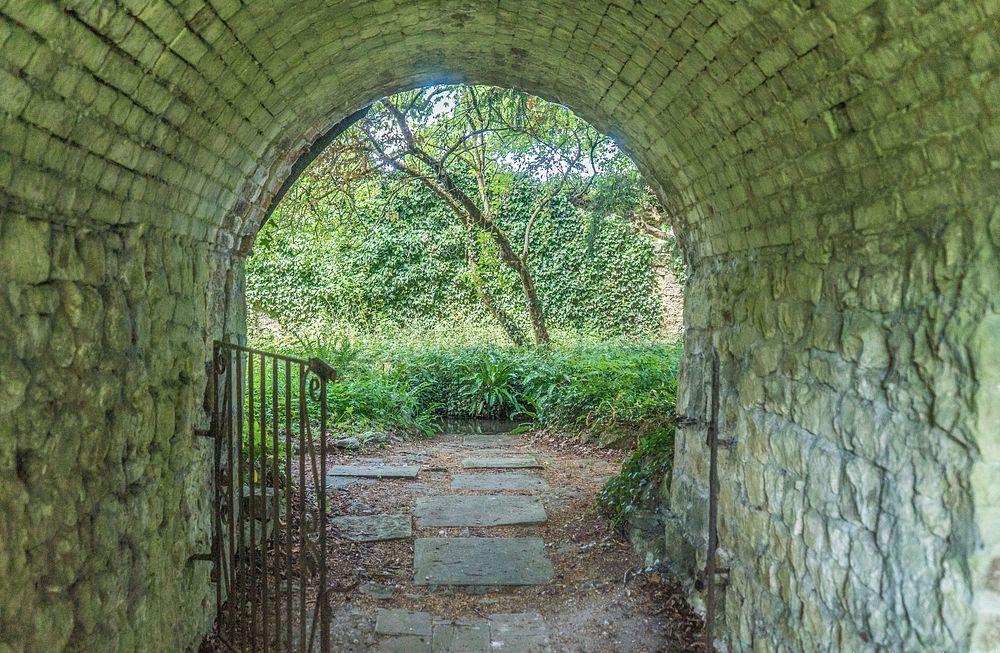https://creativecommons.org/publicdomain/zero/1.0/https://www.rawpixel.com/image/11176334

Boxley Abbey, Buildings within the Scheduled ancient monument site. (Not open to public)
From the time of St Augustine's mission to refound Christianity in AD 597 to the reign of Henry VIII, monasteries formed an important facet of both religious and secular life in the British Isles. Monasteries were built to house communities of monks, canons (priests), and sometimes lay-brothers, living a common life of religious observance under some form of systematic discipline. It is estimated from documentary evidence that over 700 monasteries were founded in England. These ranged in size from major communities with several hundred members to tiny establishments with a handful of brethren. They belonged to a wide variety of different religious orders, each with its own philosophy. As a result, they vary considerably in the detail of their appearance and layout, although all possess the basic elements of church, domestic accommodation for the community, and work buildings. Monasteries were inextricably woven into the fabric of Medieval society, acting not only as centres of worship, learning, and charity, but also, because of the vast landholdings of some orders, of immense wealth and political influence. They were established in all parts of England, some in towns and others in the remotest of areas. Many monasteries acted as the centre of a wide network including parish churches, almshouses, hospitals, farming estates and tenant villages. Some 75 of these religious houses belonged to the Cistercian Order founded by Saint Bernard of Clairvaux in the twelfth century. The Cistercians - or "white monks on account of their undyed habits" - led a harsher life than the earlier monastic orders, believing in the virtue of a life of austerity, prayer and manual labour. Seeking seclusion, they founded their houses in wild and remote areas where they undertook major land improvement projects. Their communities were often very large and included many lay brethren who acted as ploughmen, dairymen, shepherds, carpenters, and masons. The Cistercians' skills as farmers eventually made the Order one of the most rich and influential. They were especially successful in the rural north of England where they concentrated on sheep farming. Boxley is one of the most complete of the group of Cistercian Abbeys which were established as daughter houses by larger monasteries. Of these daughter houses virtually nothing is known other than the layouts of the church and cloisters. Few Abbey precincts survive sufficiently extensively to allow an understanding of the range of agricultural and industrial activities undertaken at such a site to support the community of monks and lay-brethren. The degree of survival and diversity of features in the example at Boxley provide a potentially outstanding opportunity to do so. At the same time, the small scale excavation of parts of the cloisters and church at Boxley means that it is well documented archaeologically.
Details
The monument includes the abbey and monastic precinct at Boxley. The remains of the Abbey, which was founded in 1143, are enclosed within an angular wall which preserves the line and many of the features such as door-openings of the original precinct wall, although some of its fabric is clearly recent. The main gatehouse is on the western side, and features Tudor brickwork as well as a quantity of original medieval stonework, showing that it was rebuilt not long before the abbey's dissolution in 1538. Many features of the abbey have been disguised by later landscaping but were identified during small-scale excavations in 1897-8 and 1971-2. Both the east range of the cloister and the south aisle of the church are marked by embankments within the present garden whilst the E-W drain from the latrine has been incorporated into a walled garden. The nave of the church is marked by a former water garden. Further remains of the abbey are considered likely to survive beneath the present ground level, such as stables, granaries and other agricultural buildings, many originally built of timber. Fishponds and other watercourses survive as earthworks at several locations. The main upstanding feature inside the 9ha. precinct is the Hospitium. This building, thought originally to have been a hostel for visitors to the Abbey, is now used as a barn; it is included in the scheduling as well as being listed Grade I. Excluded from the scheduling are the cottages, which are listed Grade II, near the gatehouse, and the present house, which is listed Grade II*, (except the lengths of medieval stone walling of the W range of the cloister), and also the metalling of the access roads and the service trenches below them. The ground beneath each, however, is included. Also excluded from the scheduling are all post-Dissolution stonework used for garden features etc. unless part of repairs to medieval structures.
Original public domain image from Flickr
Public DomainFree CC0 image for Personal and Business use